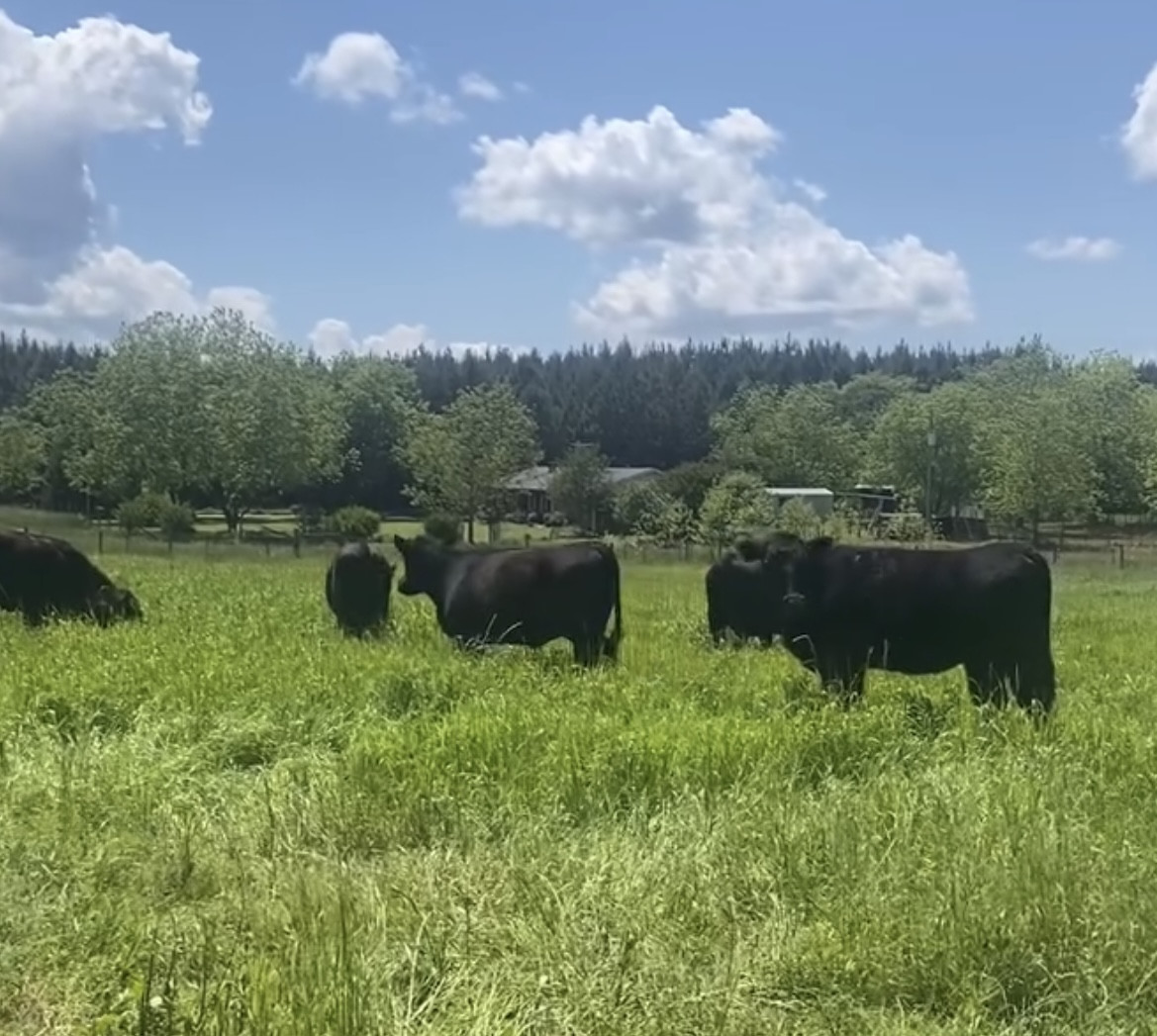Part 1: Sustaining Our Cattle Year-Round: Grazing & Haying
posted on
June 8, 2024

Welcome to our two-part newsletter series! We’re excited to share how we maintain our nearly “90% grass-fed” cattle year-round through both pasture grazing and haying.
Grass Fed on Pasture
Here in Bishop, Georgia, our landscape is known as the Piedmont. The Piedmont region is characterized by its rolling hills, mixed hardwood and pine forests, and a history of agriculture and forestry activities. It stretches from New Jersey to central Alabama, encompassing much of northern Georgia. Our forage isn’t as rich in nutrients (as some pastures up north), and we have less acreage for grazing (like prairies out west). To keep our cattle happy and healthy, we supplement their diet with a small amount of protein-rich feed, ensuring high-quality care and high-quality beef!
Despite these challenges, our commitment to grass feeding is unwavering. We aim to provide our cattle with the most natural diet possible, mainly comprising grass and other wild edibles found in our pastures. Our biodiverse pasture includes crimson clover, rye, and Bermuda grass, creating a varied and nutritious diet for our cattle.
The Role of Haying
We are proud to say that we produce all of our own hay! Haying is a crucial part of our farming practices, allowing us to feed grass to our cattle throughout the year, even in winter. By making our own hay, we ensure it contains the same diverse mix of grasses and plants that our cattle enjoy during the grazing season. Hay is essentially preserved grass, enabling us to maintain a grass-fed diet for our cattle all year round.
Our haying process not only supports our cattle’s diet but also aligns with our regenerative farming practices. By rolling out hay in the fields, we help distribute nutrients back into the soil, promoting healthy pasture growth for the future.
Nutritional Supplementation
While our cattle are primarily grass-fed, we provide a small amount of grain feed once they reach around 900 lbs. This supplementation is essential for several reasons, which we will explore in detail in our next newsletter. The health of our cattle and customers is our top priority, and this balanced diet ensures both.
Stay tuned for Part Two of our newsletter series, where we will dive into the specifics of our feed supplementation practices. We’ll explain why a small amount of grain is beneficial for our cattle and how it contributes to the quality of the meat we produce.



